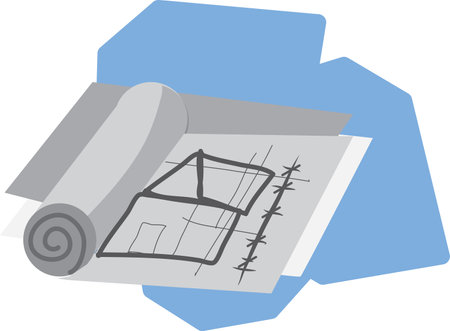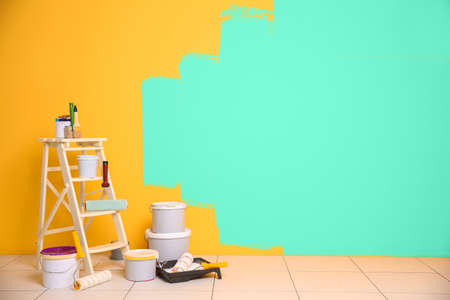Understanding Different Types of Wall Imperfections
Before you grab a paint roller, it’s crucial to know what kinds of imperfections might be lurking on your walls. Not all flaws are created equal—some need just a quick touch-up, while others require a bit more effort. Learning to spot these issues early can save you time and make your finished paint job look much more professional.
Common Wall Imperfections You’ll Find
Here are some of the most typical problems homeowners encounter before painting:
| Imperfection Type | What It Looks Like | Common Causes |
|---|---|---|
| Cracks | Thin lines in the wall surface, sometimes branching out | Settling of the house, temperature changes, or moisture |
| Dents | Small depressions or dips in the wall | Bumping furniture, door handles, or accidental impacts |
| Nail Holes | Tiny holes or punctures, often in rows or groups | Pictures, shelves, or decorations that have been removed |
| Stains | Discolored patches that may look yellowish, brown, or gray | Water leaks, smoke damage, grease, or crayon marks from kids |
Why It Matters to Identify These Issues First
If you don’t address wall imperfections before painting, you might end up with uneven color, visible bumps, or stains bleeding through your new coat of paint. That’s why it pays off to take a close look at your walls under good lighting and run your hand over the surface to feel for anything unusual. Once you know what you’re dealing with, you’ll be better prepared for the next steps in fixing them up.
2. Gathering the Right Tools and Materials
Before you jump into fixing wall imperfections, it’s important to gather all the right tools and materials. Having everything on hand will make your DIY project go smoother and help you get a professional-looking finish. Let’s break down the must-haves for any wall repair job.
Essential Supplies for Wall Repair
| Tool/Material | What It’s For |
|---|---|
| Spackle or Joint Compound | Filling small holes, cracks, and dents in drywall or plaster. |
| Putty Knife (2″–6″) | Applying spackle smoothly and scraping off excess material. |
| Sandpaper (120–220 grit) | Smoothing patched areas so they blend seamlessly with the wall. |
| Primer | Sealing repaired spots so paint sticks evenly and covers well. |
| Painter’s Tape | Protecting trim, outlets, and switches from accidental paint marks. |
Tips for Choosing Your Supplies
- Spackle: For minor repairs, lightweight spackle is easy to use and dries fast. For bigger holes, use joint compound or patch kits.
- Putty Knife: A 2-inch blade works great for tight spaces, while a wider knife can cover larger areas quickly.
- Sandpaper: Start with a coarser grit like 120 for rough patches, then finish with a finer 220 grit for a super smooth surface.
- Primer: Choose a stain-blocking primer if you’re covering up watermarks or other tough stains.
- Painter’s Tape: Go with blue painter’s tape—it peels off easily without leaving sticky residue behind.
Extra Handy Items to Have Nearby
- Damp sponge or cloth: For wiping dust after sanding and cleaning surfaces before priming.
- Drop cloths: To protect your floors from dust and drips during repairs and painting.
- Pencil: For marking problem spots that need extra attention.
The Bottom Line on Prepping Your Toolkit
If you have these essentials ready to go, you’ll be set up for success as you tackle common wall imperfections. Investing a little time in gathering supplies now will save you headaches later—and make your walls look as good as new when it’s time to paint!

3. Prepping the Surface for Repairs
Before you dive into fixing wall imperfections, it’s super important to start with a clean slate. Proper prep work makes all the difference between a paint job that looks professional and one that doesn’t last. Here’s how you can get your walls ready the right way:
How to Clean Your Walls
First, you want to get rid of any dust, dirt, or grease that might prevent new paint from sticking well. If you skip this step, you’ll notice paint peeling or flaking down the road.
Step-by-Step Wall Cleaning Guide
| Task | What Youll Need | How To Do It |
|---|---|---|
| Dusting | Microfiber cloth or duster | Wipe down all surfaces from top to bottom to catch cobwebs and loose dust. |
| Removing Grease/Grime | Mild soap, warm water, sponge | Focus on spots like kitchens or near light switches. Rinse with clean water and let dry. |
| Stubborn Stains | Baking soda paste or household cleaner | Gently scrub stains, then wipe clean with damp cloth. |
| Mold/Mildew Removal | White vinegar or specialized cleaner | Treat affected areas, rinse well, and allow to dry completely. |
Dealing With Old Paint and Flaking Areas
If your walls have old, flaky paint or rough spots, you’ll need to take care of those before any repairs. Grab a putty knife or a paint scraper and gently remove loose paint chips. Sand rough edges with fine-grit sandpaper until everything feels smooth to the touch.
Tip:
If you’re dealing with glossy paint, lightly sanding the surface will help new spackle and paint stick better.
Trouble Spots to Check Before Repairing
- Kitchens and Bathrooms: Look out for grease splatters and mildew.
- Around Doors and Switches: These spots pick up fingerprints and grime fast.
- Corners and Baseboards: Dust loves to hide here—don’t miss them!
Your Prep Checklist Before Moving On:
- Dusted all wall surfaces (top to bottom)
- Cleaned off grease, stains, and mold/mildew if present
- Sanded down any rough patches or glossy areas
- Removed old, flaking paint chips
- Let everything dry completely before starting repairs
4. Fixing Small Holes and Dents
Step-by-Step Instructions for Filling Nail Holes and Minor Dings
Before you start painting, it’s important to take care of those little imperfections like nail holes, push pin marks, or minor dents. Here’s a simple process anyone can follow to get smooth, paint-ready walls.
What You’ll Need
| Item | Purpose |
|---|---|
| Spackle (pre-mixed) | Fills small holes and dents |
| Putty knife (2-3 inch) | Smooths spackle over imperfections |
| Fine-grit sandpaper (120-220 grit) | Sands the dried spackle smooth |
| Damp cloth | Cleans dust off after sanding |
| Primer (optional) | Helps paint stick evenly if needed |
How to Fix Small Holes and Dents: Step by Step
- Clean the Area: Wipe down the wall where you see holes or dents using a damp cloth. Let it dry completely.
- Apply Spackle: Scoop a small amount of spackle onto your putty knife. Gently press it into the hole or dent, then smooth it flat so it’s level with the wall.
- Let It Dry: Check the instructions on your spackle container, but most brands dry in about 30 minutes to an hour for small repairs.
- Sand the Surface: Once dry, lightly sand over the area with fine-grit sandpaper until it feels even with the rest of the wall. Be gentle—too much sanding can create a dip.
- Clean Again: Wipe away any dust with a clean, slightly damp cloth.
- (Optional) Prime the Spot: If your wall is a dark color or if you used a lot of spackle, dab on some primer to help your new paint blend in perfectly.
Sanding Tips for a Smooth Finish
- Use light, circular motions instead of pressing hard.
- If you notice any bumps after sanding, add another thin layer of spackle and repeat the process.
- A tack cloth can pick up extra dust if you want a truly flawless finish before painting.
Your walls are now ready for paint—no more unsightly nail holes or dings!
5. Repairing Cracks and Larger Damage
When you’re prepping your walls for a fresh coat of paint, cracks and larger holes can really stand out. But don’t worry—fixing them isn’t as intimidating as it might seem. Here’s how you can tackle these common issues like a pro, using the right tools and materials for long-lasting results.
Best Practices for Patching Cracks
Cracks in drywall or plaster often happen due to settling or humidity changes. To fix them, follow these steps:
- Widen the Crack Slightly: Use a utility knife to open up the crack just enough so filler will adhere properly.
- Clean Out Dust: Brush away any loose debris inside the crack.
- Apply Mesh Tape (for larger cracks): Place self-adhesive mesh tape over the crack to prevent it from reopening.
- Add Joint Compound: Use a putty knife to apply joint compound smoothly over the tape and crack. Feather the edges outward for a seamless look.
- Let Dry & Sand: Allow the area to dry completely, then sand it smooth with fine-grit sandpaper.
Patching Larger Holes
Bigger holes—like those from doorknobs or accidents—need a little extra support. Here’s what works best:
| Hole Size | Recommended Patch | Steps |
|---|---|---|
| Up to 1/2 inch | Spackle or lightweight joint compound | Fill hole, let dry, sand smooth |
| 1/2 inch to 6 inches | Mesh patch or mesh tape + joint compound | Place patch/tape, cover with compound, dry, sand |
| Larger than 6 inches | Drywall patch kit | Cut out damaged area, secure new drywall piece, tape seams, apply compound, dry, sand |
Tips for Success
- If youre unsure whether to use mesh tape or a drywall patch, remember: mesh tape is great for long cracks or small holes; drywall patches are necessary for big gaps where theres little support.
- Always feather out joint compound at least a few inches beyond the repair so it blends well with your wall.
- Sanding between coats makes each layer smoother and helps hide the repair when painted.
- If you’re covering textured walls, match the texture before painting by dabbing on compound with a sponge or brush after sanding.
The Right Materials Make All The Difference
A successful wall repair starts with using quality products. Choose reputable brands for mesh tape, joint compound, and patches—your local hardware store staff can point you in the right direction if you’re not sure what to buy. Taking your time with repairs ensures your paint job looks professional and stands the test of time.
6. Priming for an Even Paint Finish
If you want your freshly fixed walls to look flawless, priming is a step you definitely don’t want to skip. In the U.S., it’s common knowledge among DIYers and pros alike: a good primer can make or break your paint job. Here’s why priming matters and how it helps give your wall that smooth, vibrant finish you’re after.
Why Priming Matters
Priming does more than just prep the surface—it helps hide repairs, seals the wall, and makes your paint color pop. Let’s break down what a primer actually does for you:
| Benefit | How It Helps |
|---|---|
| Hides Repairs | Primer covers up patched areas so they don’t show through your final paint layer. |
| Seals the Wall | It locks in any dust or previous stains, giving you a clean slate for painting. |
| Makes Colors Pop | A solid base coat allows your chosen paint color to look bright and even across the whole wall. |
When Should You Use Primer?
- After Patching Holes or Cracks: Any time you’ve repaired nail holes, dents, or larger patches, those spots will soak up paint differently than the rest of the wall unless you prime first.
- Over Stains or Dark Colors: If your wall has water stains, marker marks, or is painted in a very dark color, primer helps cover those up so they don’t bleed through.
- On New Drywall: Fresh drywall is extra absorbent—primer keeps your paint from looking blotchy.
Types of Primer to Consider
The type of primer you need depends on your wall and the repairs youve made. Here are some common options:
| Type of Primer | Best For | Main Benefit |
|---|---|---|
| Latex Primer | General use on drywall and previously painted walls | Easy cleanup; low odor; works for most jobs |
| Stain-blocking Primer | Covers water damage, smoke stains, or marker marks | Keeps stubborn stains from bleeding through new paint |
| Bonding Primer | Slick surfaces (like glossy paint or paneling) | Makes sure paint sticks where it should |
Quick Tip:
If you’re on a budget, many big-box stores in the U.S. offer store-brand primers that work great for most home projects—just check the label to make sure it fits your needs.

